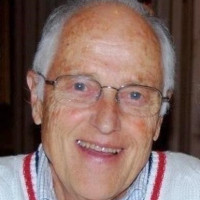The possibility draws closer to reality thanks to an award of $1.2 million from the U.S. Department of Energy’s Advanced Research Projects Agency-Energy (ARPA-E) that will allow a team of Syracuse University researchers to develop “occupancy sensing” technology to detect human presence inside buildings and, in turn, adjust temperature to reduce energy waste.
 Tarek RakhaFifteen teams from across the U.S. have now been selected to receive support under the ARPA-E Saving Energy Nationwide in Structures with Occupancy Recognition (SENSOR) program. The Syracuse University research team includes faculty researchers from the Department of Electrical Engineering and Computer Science, and Syracuse Architecture assistant professor and SyracuseCoE (Syracuse Center of Excellence for Environmental and Energy Systems) faculty research fellow Tarek Rakha. Together they will collaborate with SRI International—an independent nonprofit research center—and the SyracuseCoE. Engineering associate professor Senem Velipasalar is the principal investigator of the project. Additional funding from Syracuse University and NYSERDA (New York State Energy Research and Development Authority) will contribute to this research effort.
Tarek RakhaFifteen teams from across the U.S. have now been selected to receive support under the ARPA-E Saving Energy Nationwide in Structures with Occupancy Recognition (SENSOR) program. The Syracuse University research team includes faculty researchers from the Department of Electrical Engineering and Computer Science, and Syracuse Architecture assistant professor and SyracuseCoE (Syracuse Center of Excellence for Environmental and Energy Systems) faculty research fellow Tarek Rakha. Together they will collaborate with SRI International—an independent nonprofit research center—and the SyracuseCoE. Engineering associate professor Senem Velipasalar is the principal investigator of the project. Additional funding from Syracuse University and NYSERDA (New York State Energy Research and Development Authority) will contribute to this research effort.
Heating, cooling, and ventilation account for nearly 13 percent of all energy produced in the U.S.; in commercial buildings, 37 percent of all energy usage stems from HVAC consumption. Energy waste largely occurs when buildings/homes are un-occupied or partially occupied. Currently, the automated and control systems used in many buildings lack any accurate, reliable information about level of occupancy to support significant energy reduction efforts.
According to ARPA-E, “projects in the SENSOR program seek to reduce energy used by heating, ventilation, and air conditioning (HVAC) systems by 30% in both residential and commercial buildings, potentially producing savings of 2-4 quadrillion BTU (quads) across the U.S. power system. SENSOR projects will develop sensing technologies that minimize or eliminate the need for human intervention while pursuing aggressive cost, performance, privacy, and usability requirements in order to gain the acceptance and penetration levels needed to achieve this 30% reduction in HVAC energy consumption.”
“The threat of climate change necessitates every effort to conserve energy and reduce our carbon footprint,” says Rakha. “The successful implementation of the sensor technology that the team will develop should have disruptive impacts on the field of energy efficiency in the built environment.” (by Elaine Wackerow)











